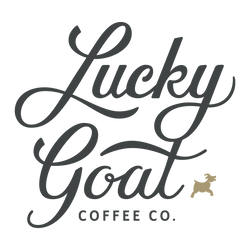The Buzz About Caffeine in Coffee
The topic of caffeine levels is often surrounded by lots of confusion. We hear numbers thrown around about how many milligrams of caffeine are in each ounce of a coffee drink, and how caffeine in different forms may affect us differently. In order to eliminate some of the mystery behind caffeine in coffee, let's dive in and set you at ease!

What is Caffeine?
Caffeine is a stimulant that is naturally found in coffee, tea, and chocolate. It has a distinct bitter and astringent taste, which adds balance and complexity to any beverage or food it is part of. Its mildly stimulating properties serve us in a comforting morning beverage that keeps us alert and focused and has become a common daily beverage in the lives of many Americans.Caffeine in the Coffee Plant
Coffee is one of the most common sources of caffeine consumption where we consume our caffeine. In the plant, it serves as a deterrent to predators and protects the plant from being eaten by animals that can’t process the chemical. It’s not just the roasted beans that contain caffeine; every part of the plant—leaves, stems, and cherries—has some concentration of the bitter compound.Caffeine in Tea vs Coffee
Many people enjoy the balanced increases in alertness and energy that tea provides them, over that from coffee. Part of this may have to do with the varying doses found in these two beverages—a drip cup of coffee can have up to double the amount of caffeine compared to a black tea. The other contributing factor to these differences, however, is a slower release of the caffeine from tea into the body. Tannins and amino acids that are naturally present in tea will help to bind the caffeine, and slowly release it in the body for a consistent and steady energy boost, compared to the often-jittery spikes in energy caused by coffee.

How Much Caffeine is in My Drink?
Different drinks will have varying amounts of caffeine, which is largely due to the varying ways these drinks are extracted. Espresso will contain approximately 80mg of caffeine for a double shot, which is the standard serving size that goes into most lattes, cappuccinos, cortados, and macchiatos. Drip coffee will contain approximately 120mg of caffeine for a 12 oz cup—much more than the standard serving of espresso. Cold brew can contain varying amounts of caffeine, depending on the way that it is brewed. Generally, however, more caffeine infuses each ounce of cold brew because it is steeped over a longer period than percolated brewing methods—sometimes up to 22mg per ounce!
Decaf Coffee: Is it Totally Caffeine Free?
We are big fans of our Mountain Water Decaf for cutting back on caffeine. It is an easy way to keep the rhythm of drinking coffee if you are experiencing side effects or desiring to cut back for other reasons. While decaffeinated coffee contains significantly less caffeine than a typical cup of coffee, it leaves behind trace amounts. Compared to the 120mg of caffeine in a regular cup of coffee though, there are only about 15mg of caffeine in a 12 oz cup of decaf coffee.There is a lot of information about caffeine out there, and we always recommend choosing the path that works best for you! Extra boosts of energy can be found in cold brew beverages, and lower levels of caffeine can be found in decaf coffee and teas. Remember that everyone's body reacts differently to caffeine, so listen to your own needs and preferences. Whether you need a quick pick-me-up or a soothing, low-caffeine option, there's a coffee out there to suit your lifestyle.








